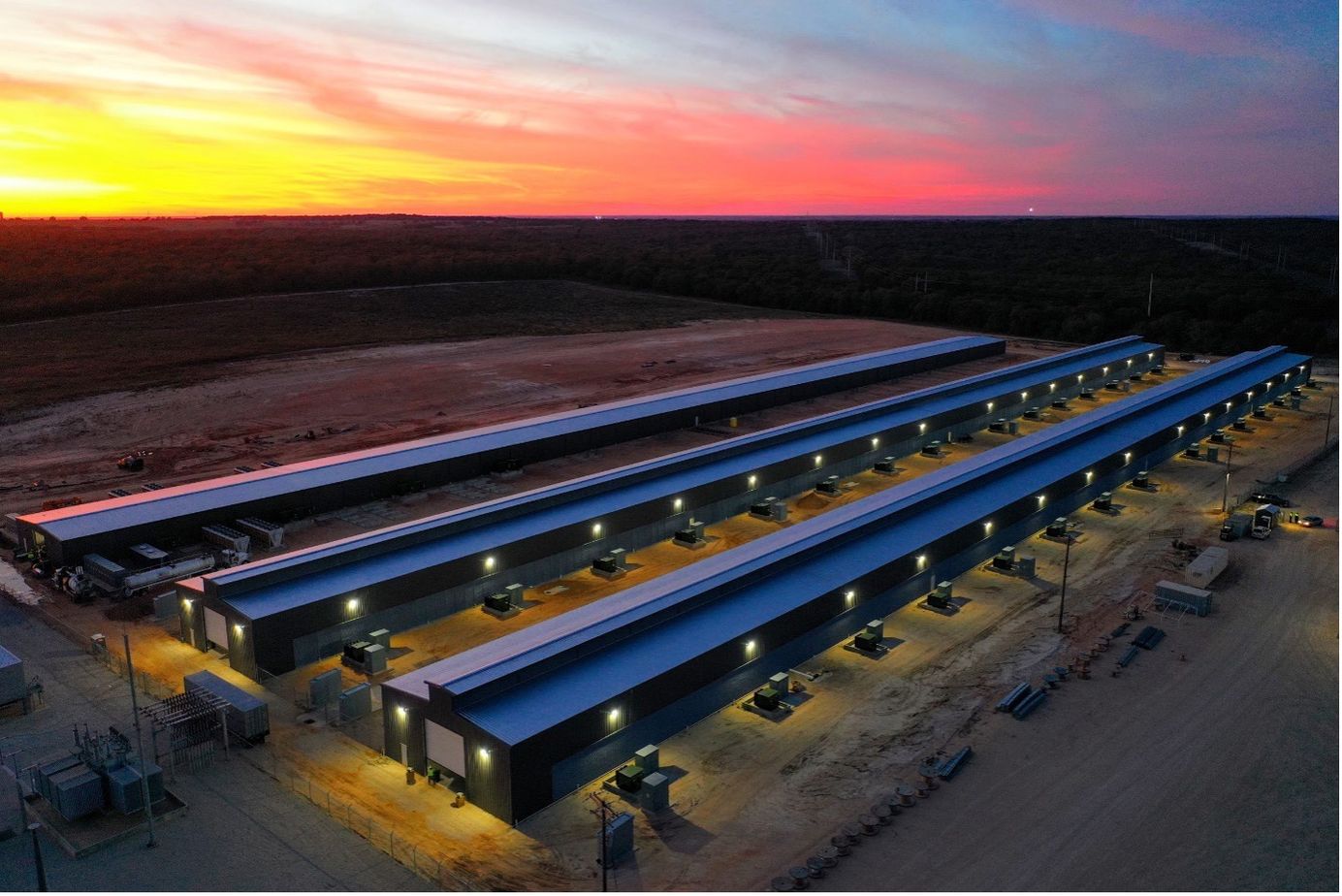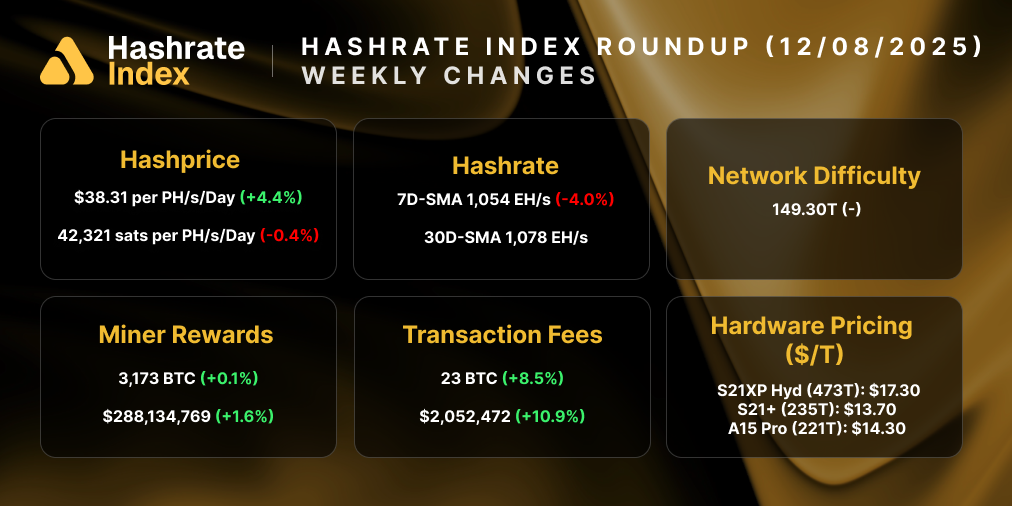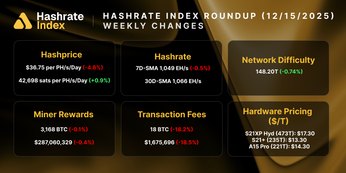
Bitcoin Mining Curtailing, Demand Response, and Controllable Load
Bitcoin miners are helping the grid in times of stress. Here's how Bitcoin mining acts as a controllable load resource.
Bitcoin miners are in the news again for power practices. Only this time, they’re not being called out for using too much power. They’re being talked about for turning off their machines when the grid needs the power the most.
Let's take a flashback to last year, when Winter Storm Uri ripped through Texas and froze over infrastructure. Whinstone powered down its Rockdale, Texas facility in response to the storm, which so hampered infrastructure in the state that power was being sold for thousands of dollars a MWh.
Texas braced for another winter storm at the beginning of February, and even though it was much milder, Whinstone (now part of Riot) wasn't taking any chances. Whinstone's CEO, Chad Harris, made the decision to power down the facility before the storm came.
It was a practical decision, Harris told said over the phone. Temperature was set to drop below freezing, pavement was going to ice over, and working conditions would be hazardous.
Practical or otherwise, the decision is a prime example for how Bitcoin miners can be a controllable load resource for the electrical grid to strengthen it in times of sensitivity.
Sponsored by BlockFi

How Can Bitcoin Mining Be a Controllable Load Resource and What Is Power Curtailing?
When Whinstone curtails power, the facility reduces its power draw to just enough to keep the lights on. The rest of the power, the lion's share of which would go to the miners, Whinstone/Riot “sells it back” to the grid.
In its power purchasing agreement with ERCOT, the independent system operator (ISO) which powers Texas’ grid, Riot has clauses that allow it to curtail operations and receive power credits from the power authority for this service, which the company can use to payoff future power bills. It's worth noting that curtailing contracts can take many forms and that some miners may not be compensated for this service at all.
A variety of factors affect the profitability of power curtailment. With Bitcoin’s price (and by proxy, hashprice/mining profitability) relatively high currently, a miner like Riot will make less revenue curtailing energy than mining bitcoin on most days, expect when there is an energy shortage.
Harris mentioned Riot winds down Whinstone a handful of times a year, mostly in the winter and summer months when the facility is either encased in ice or choked with heat.
Bitcoin Miner Power Curtailing Beyond Texas
Texas isn’t the only state where miners are acting as a controllable load resource.
In a press release for its January production update, Core Scientific disclosed that it curtailed its operations four times in January to the tune of 1.1 GW. All four curtailments were in North Dakota, Core Scientific Founder and Chairman Darin Feinstein wrote over email:
We work with our power providers on curtailment plans that are related to emergencies, controlled load imbalances, or economic needs. The different programs allow the utility to take our electricity and provide it to the grid depending on the circumstance. These options can be called upon by our power providers in as little as two minutes' notice, and the option can last an unlimited number of hours per year for emergency situations.
Core Scientific powers down both its self-mining ASICs and the bitcoin miners they are hosting for others as well, Feinstein said.
Can Bitcoin Mining Stabilize the Grid?
Some mainstream media and critics depict Bitcoin miners as insatiable energy goblins that are going to eat up all of the grid’s power and leave the rest of us electricity starved.
Riot, Core Scientific, and others’ actions show the reality is actually the opposite. Miners who are connected to the grid will be the first to shut down when weather, power shortages, or other factors threaten power availability.
Going further, Bitcoin miners acting as a controllable load resource could help drive electrical infrastructure expansion. Bitcoin miners act as energy buyers of first and last resort; they purchase large blocks of energy for predetermined prices from power providers, creating consistent revenue streams for these utilities. Since Bitcoin miners are steady and lucrative clients, power providers could build out more MW capacity when expanding than they would without such demand.
As our CEO Nick Hansen explained on Stephan Livera’s podcast, the grid can use this extra capacity in times of stress:
Let's say Houston on any given day needs 50 MW. Well during this cold snap, they need 150 MW. Well, you can't build out 150 MW for a single city because you don't have anywhere for that extra 100 MW to go when the grid doesn’t need it, so it's effectively wasted. And so Bitcoin miners will come in and provide that demand, that base load. This type of base load has never existed in the world until today: an economically-incentivized base load that has effectively zero turn off cost other than the opportunity cost [of not mining blocks].
So Bitcoin miners will consume energy that would otherwise not have demand, and power authorities can use this excess energy to bolster the grid when necessary. Conceptually, this feature makes Bitcoin mining an 'economic battery' of sorts for the grid; Bitcoin miners subsidize energy production when demand is low and the grid needs the power of the miner's purse, but they also provide power when the grid needs it most. Under these agreements, Grids are conceptually "storing" excess energy with miners and extracting this energy when they need it.
Something important to note at the end of Nick’s comment: the only opportunity cost for switching off a mining farm is that the miner earns less revenue. Unlike other large energy consumers, like factories or datacenters, Bitcoin mining farms can shut down without disrupting economic systems or vital services.
Sure, the miner makes less money, but the Bitcoin network doesn’t shut down. If a datacenter cuts power, a piece of the internet goes down or a critical service for, say, a healthcare provider becomes inoperable. If a factory turns off the lights, then a supply chain is disrupted and some shelves go empty.
This distinction is the key feature that makes Bitcoin mining uniquely positioned to provide this feature to the grid. Instead of being a detriment, then, Bitcoin mining could strengthen grid stability.
As Feinstein said over email, it will–and it already is, albeit to a small extent for now.
Mining operations strengthen the grids we conduct business on. Unlike most other businesses, we can power down in seconds/minutes without damaging ramifications for our centers or our clients. Traditional datacenters run servers for industries that cannot be shut down (i.e., hospitals, air travel, etc). The ability to down-power means that miners can be seen as a “battery” that curtails power when needed to make the electrical grid more robust, without equipment damage or jeopardizing public safety or affecting the network."
Hashrate Index Newsletter
Join the newsletter to receive the latest updates in your inbox.








